|
| |
Back to Homebuilts
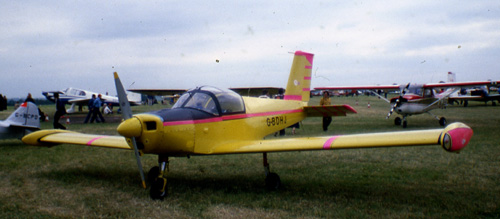 |
The Pazmany PL1 is a two-seat, plans-built
machine, designed by Ladislao Pazmany (www.pazmany.com).
It is constructed of Aluminium, and powered by a Lycoming engine
ranging from 108 to 150hp. Typical cruising speed is 120mph, and
range is 490 miles. It is quite popular, with around 300 flying
worldwide. Gross weight is 1,450lb; it i s19 feet 3 inches long,
with a wing span of 27 feet 8 inches. It looks similar to the
Practavia Sprite, but the two designs are unrelated.
This one was at
Cranfield, July 1984 |
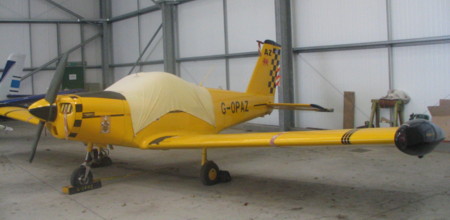 |
Pazmany PL2
Haverfordwest, September 2007 |
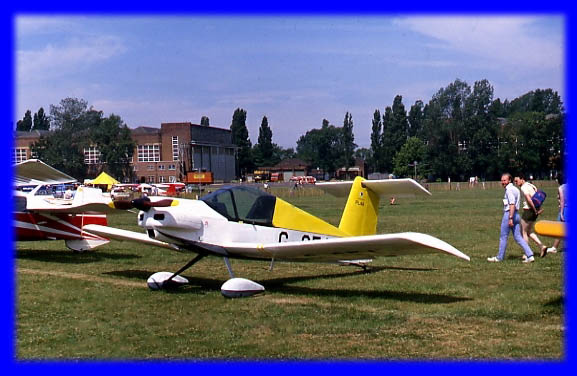 |
The Pazmany PL4 is a diminutive single seat
ultralight homebuilt, weighing only 850lb fully laden. Powered by a
1600cc converted Volkswagen engine producing between 50 and 90
horsepower, it cruises at about 100mph and has a range of 280 miles
(you can't fit very much fuel in something this size!). It is 16
feet 5 inches long, with a wing span of 26 feet 7 inches.
This one was at
Cranfield, July 1984 |
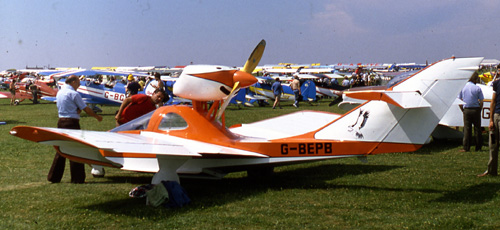 |
The Pereira Osprey is one of a small group of
homebuilt amphibian aircraft. It is also one of the few homebuilt
aircraft to have retractable undercarriage (essential for landing
safely on water). It is a very sleek two seat design by George
Pereira, built largely of wood. Its 150hp engine gives it a cruising
speed of 130mph and range of 500 miles. Gross weight is 1,560lb,
lenght 20 feet 6 inches, and wing span 26 feet. Since its first
flight in 1974, over 400 have been completed.
This one was also at
Cranfield in July 1984 |
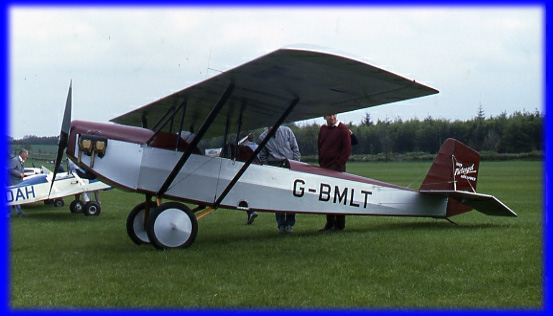 |
The Pietenpol Aircamper was designed in 1933
by Bernard Pietenpol. It is made largely of wood and fabric. It can
be powered by any suitable engine between 65 and 115 horsepower.
This is the thing to get if you want gentle, sedate flying and an
excellent view of what you're flying over; top speed is 90mph. It is
a two seater, weighing 1,000lb. It is 17 feet 8 inches long,
with a wing span of 29 feet. It is still popular as a relatively
simple plans-built machine.
This one was at Popham in May 1987. |
|
|
The Pitts Special was designed in America in
the 1940s by Curtis Pitts, intended as a high performance aerobatic
aircraft for amateur construction. There are two essential variants
- the S1 single seater, 15 feet 6 inches long with wing span 17 feet
4 inches and gross weight 1,050lb, and the S2 two seater, 18 feet 3
inches long with wing span 20 feet and gross weight 1,500lb. Both
are normally powered by a 180hp Lycoming engine, have top speed of
140mph and range about 400 miles. But their main objective is
aerobatics, at which their small size, high power to weight ratio
and crisp controls make them excel. Pitts designs and their
derivatives have been used by many world aerobatic champions over
the years, and have been flown by many aerobatic display teams.
The top picture shows a Pitts S1S at Wickenby
in July 1976. The middle picture shows two Pitts S2As of the
Marlborough aerobatic team caught in a crossover manoeuvre during a
display at Redhill in September 1985. The lower picture is a Pitts
Special at Sandown, February 2006. |
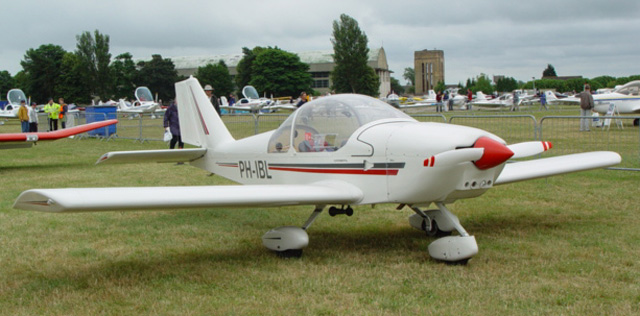 |
The Pottier P-220 is an attractive two seat
homebuilt design by Jean Pottier. The design was acquired by Evektor
in the Czech Republic, who developed it into the well-known Eurostar.
Plans for the original P-220 are still available as well.
This one was at
Kemble, July 2005 |
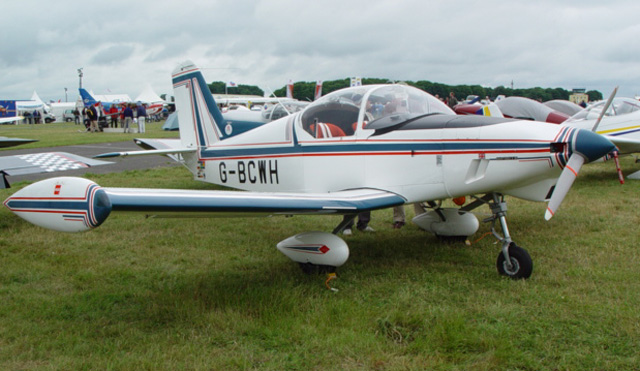 |
The Practavia Sprite was the winning entry to
a competition held in 1968 by Pilot magazine, so is sometimes known
as the Pilot Sprite. Designed by Loughborough university, it is an
all metal two seater powered by a 130hp Continental engine. Length
is 20 feet, wing span 24 feet and gross weight 1,400lb. Top speed is
130mph.
Ten have been built, of which five remain
active in 2005, including this one which visited Kemble in July. |
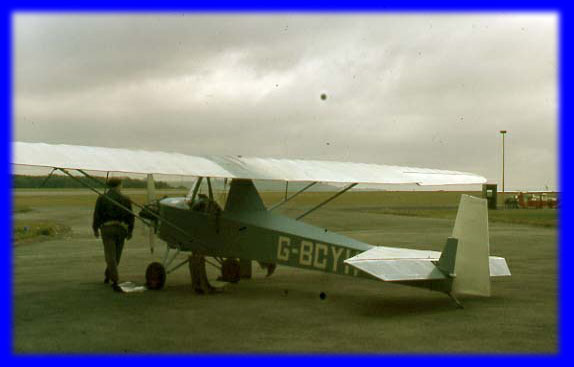 |
The Privateer is essentially a Slingsby Cadet
glider converted to be a single seater with a small 1600cc
Volkswagen engine in the nose. It is a one-off conversion done in
1976. This gives it a sedate 60mph cruise but a very respectable 200
mile range. It is described by its owner as an extremely relaxing
form of flying! Wing span is 43 feet (it is a glider, after all) and
length 20 feet. Maximum take-off weight is 870lb.
It was pictured at its Sunderland base in July
1976. Usworth was a lovely little airfield which is no longer
operational; the land was owned by the council and was sold to build
the Nissan car factory, which thanks to the highly motivated and
skilled local workforce combined with Japanese operating practices
has for many years been one of the most efficient in the world. |
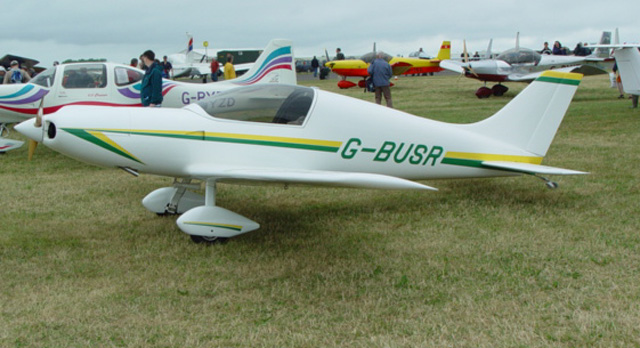
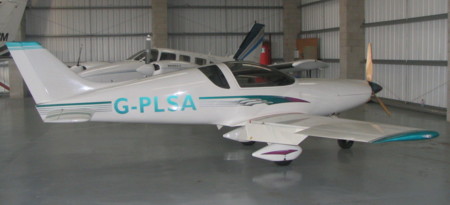 |
The Pulsar was one of the earliest of the new
generation of sleek, fast, fibreglass homebuilt aircraft (www.pulsaraircraft.com).
It can be powered by various engines, mainly Rotax or Jabiru,
ranging from 80 to 120hp. Top speed (with 120hp engine) is 170mph,
and range (with 80hp engine) is up to 900 miles. It is a two seater,
with gross weight up to 1,200lb; it is 20 feet long and has a wing
span of 25 feet. These two smart example
are (top)
at Kemble,
July 2005 and (bottom) at Gamston, November 2007. |
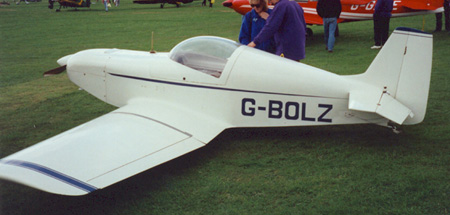
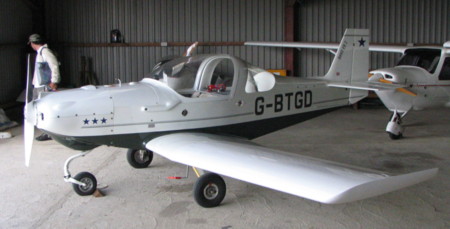 |
The Rand KR2 is a minute two seater (not sure
how two people fit into it, but they do somehow) designed in the USA
in the early 1970s by Ken Rand (www.flykr.com).
It is mainly made of wood, with a few fibreglass components. With a
gross weight of 900lb, it claims a top speed of 180mph and range of
1,600 miles. It is only 14 feet 6 inches long, with a wing span of
20 feet 8 inches.
Top: Tailwheel version at Cranfield in 1998. Bottom: Nosewheel
variant visiting Top Farm, August 2007. |
 |
The Rans S6 Super Coyote is a basic kit-built
light aircraft designed in the USA by Randy Schlitter (www.rans.com).
It is mainly made of metal tube covered with fabric. It can be
fitted with various Rotax engines between 50 and 100 hp. It is a two
seater with gross weight of 1,100lb. It can cruise at up to 115mph
and has a range of 300 miles. It is 21 feet long with a wing span of
34 feet 5 inches. It first flew in 1983.
Photograph by Ivy, Kemble, July 2005 |
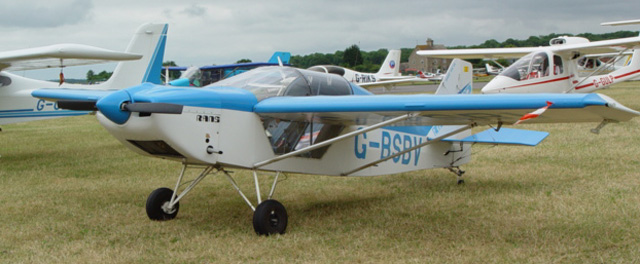 |
The Rans S10 Sakota is another little Rotax-powered
two seater from the same designer as the Coyote, this time with a
mid-mounted wing which gives good all-round visibility. A similar
engine to the Coyote gives it a cruising speed of up to 125mph and
range of 520 miles, with a lower gross weight of 1,010lb - another
illustration of the simple effect of frontal area on performance. It
is 17 feet 10 inches long, with a wing span of 24 feet.
This one was at Kemble,
July 2005 |
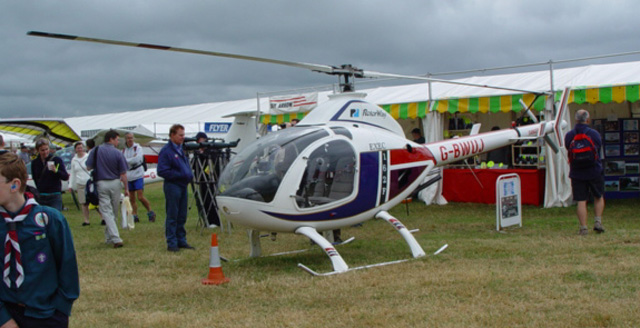
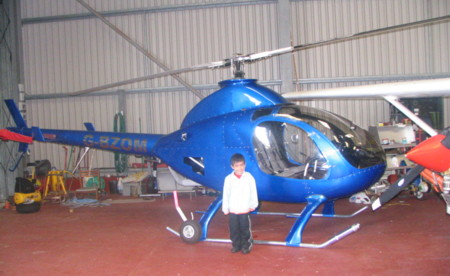 |
The Rotorway Exec is one of a very small
number of homebuilt helicopters, designed by specialist company
Rotorway (www.rotorway.com)
from Arizona, USA. It is a two seater, powered by Rotorway's own
RI162 engine, developing 150hp and driving a two-bladed rotor with a
diameter of 25 feet. It first flew in 1980. It can cruise at 95mph
and has a range of 180 miles.
Top:
Photograph by Ivy, Kemble, July 2005
Lower: Haverfordwest, October 2007. |
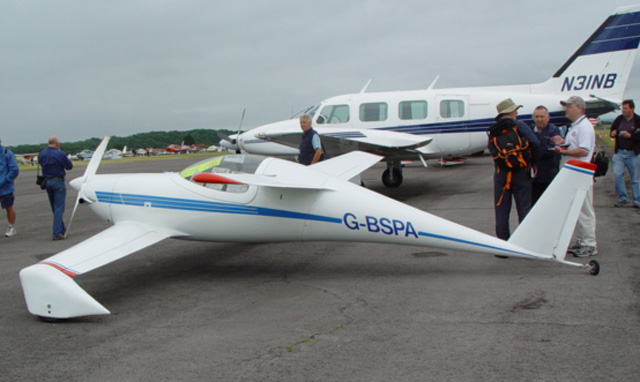 |
The Quickie is a very strange tandem wing
aircraft designed by Burt Rutan, later to found Scaled Composites.
It is built of fibreglass and sold as a kit (www.rutanaircraft.com).
It is notable that both horizontal surfaces have full lifting
functions. It is 19 feet 10 inches long, with a wing span of 16 feet
8 inches - one of very few machines other than fast jets to have
span shorter than length. It can seat one or two (`Q2' variant)
people. Typical powerplant is a 65hp converted Volkswagen engine,
which gives it a cruising speed of 140mph and range of 550 miles.
Since its first flight in 1978, about 2,000 kits were sold.
This one was at
Kemble, July 2005 |
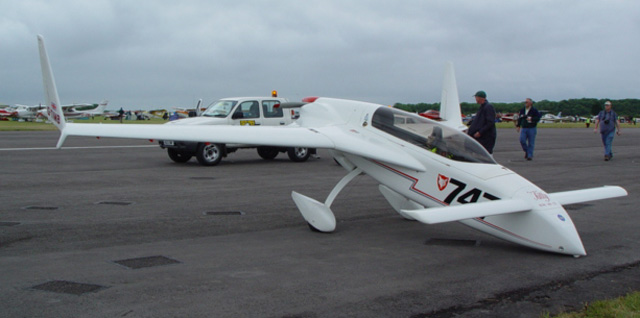 |
The Rutan Vari-Eze is a canard design,
meaning that the wings are at the back and the horizontal stabiliser
is a foreplane which develops lift, thus increasing efficiency. A
major advantage claimed for this configuration is that the foreplane
can be set to stall before the mainplane, thus effectively
preventing the main wing from ever stalling at all and contributing
to safety. The winglets serve a dual function as vertical
stabilisers and devices to reduce induced drag. This was one of the
first aircraft to introduce composite construction to the homebuilt
market. It first flew in 1975. Normal power is a Continental O-200
engine, which gives it a cruising speed of 180mph and range of 650
miles. It is 14 feet 2 inches long, with a wing span of 22 feet 2
inches. A very unusual feature is the delicate nosewheel, which is
retracted when the aircraft is at rest, making it look as though it
has got a bit missing.
Kemble, July 2005 |
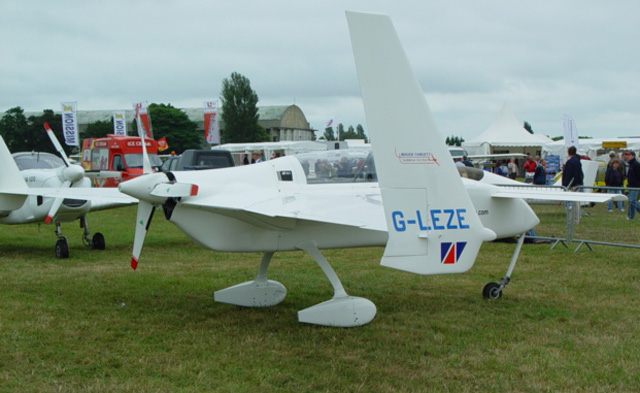 |
The Rutan Long-Eze was a 1979 upgrade of the
Vari-Eze concept, with a 108hp engine, revised vertical stabilisers,
and a range of up to 1,600 miles.
Kemble, July 2005 |





|